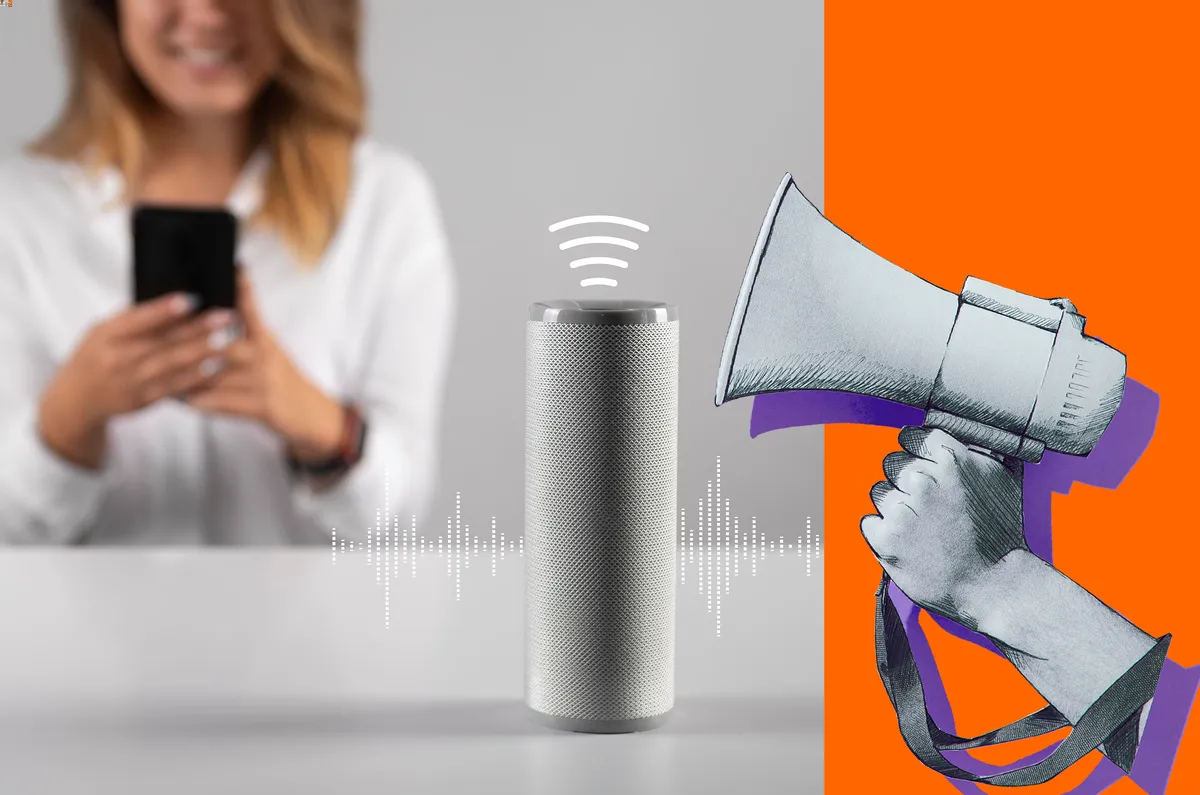Brands interactive voice ads are audio ads that allow listeners to interact with them using their voice. Brands Interactive Voice Ads are emerging as the next frontier for consumer engagement. As we delve into the realm of Interactive Voice Ads, it’s becoming clear that the personal touch of voice is revolutionizing how we interact with our favorite brands.
The convenience of voice commerce is transforming the shopping experience, allowing customers to make purchases as easily as speaking into their devices.
Meanwhile, Interactive Audio Ads are offering a hands-free, immersive advertising experience that’s both innovative and personal. As voice technology continues to advance, voice advertising is poised to become a key player in the way brands connect with and captivate their audience, promising a future where ads are not just heard but conversed with.
For example, a listener might be able to say “Add to cart” to purchase a product or “Learn more” to get more information about a service.
Why are brands using interactive voice ads?
Brands are using interactive voice ads because they are more engaging and effective than traditional audio ads. Interactive voice ads allow listeners to control the experience and get the information they want when they want it.
Tech Companies Bet on Voice
Big tech companies are really counting on us using our voices to interact with ads. In 2022, over 123 million adults in the U.S. used voice assistants like Alexa at least once a month. It’s expected that nearly half of all U.S. adults will use them monthly in the next three years.
Big names in tech are hoping that voice ads will catch on. Pandora, a music streaming service, started letting listeners use voice commands to interact with ads in 2019. Amazon, the online shopping giant, is also trying to lead in voice shopping.
Power Up Your Firm with a Winning Business Development Plan
In 2021, they began offering voice ads in North America and the U.K. that let people add things to their shopping carts just by talking to Alexa. Milk-Bone, the dog treat company, worked with Amazon Ads to create a voice ad campaign that got a lot of attention and had 31% of people who heard the ad ask Alexa to buy Milk-Bone treats.
Even though these voice ads have done well, not many media companies are trying them out. Spotify, a really big music streaming service, isn’t using voice interaction. Instead, they brought out a new ad feature in 2022 that lets listeners tap on ads instead of talking.
Benefits of Interactive Voice Ads for Brands
Here are some of the benefits of interactive voice ads for brands:
Increased engagement
Interactive voice ads are more engaging than traditional audio ads because they allow listeners to interact with them. This can lead to longer attention spans and higher recall rates.
Improved customer experience
Interactive voice ads can be used to create more personalized and relevant experiences for customers. For example, a brand could use interactive voice ads to recommend products or services that are likely to be of interest to the listener.
Increased sales
Interactive voice ads can be used to drive sales and conversions by making it easy for listeners to purchase products or services directly from the ad.
Better targeting
Interactive voice ads can be targeted to specific audiences based on their interests, demographics, and other factors. This can help brands to reach the people who are most likely to be interested in their products or services.
Brand’s Interactive Voice Ads to Engage Customers
Examples of successful interactive voice ad campaigns
Here are a few examples of successful interactive voice ad campaigns:
- Spotify’s “Yes or No” campaign for its Premium subscription service
- Pandora’s “Add” campaign for its Pandora Plus subscription service
- Amazon Alexa’s “Buy” campaign for its Echo devices
- Domino’s “Order Now” campaign
- Capital One’s “CreditWise” campaign
All of these campaigns allow listeners to interact with the ad using their voice to take a specific action, such as starting a free trial, adding a song to a station, purchasing a product, or learning more about a service.
How brands can use interactive voice ads to create personalized experiences for customers?
Brands can use interactive voice ads to create personalized experiences for customers by asking them questions and tailoring the ad response based on their answers.
For example, a brand could ask a listener what their interests are and then recommend products or services that are likely to be of interest. Or, a brand could ask a listener what their budget is and then provide information on products or services that fit that budget.
How brands can use interactive voice ads to drive sales and conversions?
Brands can use interactive voice ads to drive sales and conversions by making it easy for listeners to purchase products or services directly from the ad.
For example, a brand could allow listeners to add products to their cart or purchase products directly from the ad using their voice. Or, a brand could provide listeners with a link to their website where they can purchase products or services.
Whatever happened to interactive audio ads?
What were interactive audio ads?
Interactive audio ads were audio ads that allowed listeners to interact with them using their voice. They were similar to interactive voice ads, but they were not as sophisticated. Interactive audio ads typically allowed listeners to do things like skip the ad, learn more about the product or service being advertised, or enter a contest.
Why did interactive audio ads fail?
Although a lot of people have gadgets like Amazon Alexa and Google Nest at home or work, these devices haven’t really changed how we see ads or shop with videos as much as people thought they would.
There are a few reasons why interactive audio ads failed:
- They were not widely adopted by audio platforms.
- They were difficult to use. Listeners had to remember the name of the product or service being advertised in order to interact with the ad.
- They were not very effective. Studies showed that interactive audio ads did not increase engagement or recall rates.
How are interactive voice ads different from interactive audio ads?
Interactive voice ads are more sophisticated and effective than interactive audio ads. Interactive voice ads use natural language processing to understand listener requests, which makes them easier to use and more engaging.
Interactive voice ads are also more effective at increasing engagement and recall rates.
Brands are Testing Their Potential, but Who’s Listening?
Challenges of interactive voice ads
Despite the many benefits of interactive voice ads, there are still some challenges that brands need to be aware of:
- Limited adoption: Interactive voice ads are still a relatively new technology, and not all audio platforms have adopted them yet. This limits the reach of interactive voice ad campaigns.
- User awareness: Many consumers are not aware of interactive voice ads or how to use them. This can lead to low engagement rates.
- Technical challenges: Developing and delivering interactive voice ads can be technically challenging. Brands need to work with experienced partners to ensure that their interactive voice ad campaigns are successful.
The future of interactive voice ads
Despite the challenges, the future of interactive voice ads is bright.
Web3 for Business: Why Your Business Should Be on the Blockchain
As more and more people adopt voice technology, interactive voice ads will become more common and effective. Brands that invest in interactive voice ads today will be well-positioned to reach and engage consumers in new and innovative ways.
Wrapping Up
To sum it up, advertisers might not be using voice as quickly as we thought, but there’s still hope for the future of talking to our devices as the technology gets better.
Interactive voice ads are cool, but they might be just an extra for now unless they can reach more people. As technology keeps advancing with more AI and virtual characters, brands will keep looking for fresh ways to be different from others.
Having a special brand voice might be key for companies to build trust and be memorable to customers, especially as more of us use smart speakers to talk to brands.



